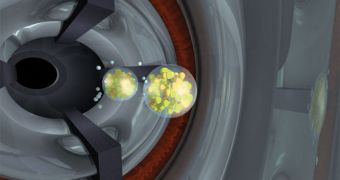Uranium is the heaviest element that Mother Nature has to offer. At 92 protons, it is fairly massive and large, and its possible applications are no longer a secret to anyone. But physicists, and scientists in general, have never been satisfied with what nature has to offer, and have always tried to get more. Over the years, they have been able to add more new chemical elements to the Periodic Table, all of which have been produced artificially. But the issue with these chemicals is that they are not necessarily stable.
In fact, the reason why these substances do not exist in nature is because they have a very unstable structure. They have a half-life (the time it takes for half of the original chemical to decay into something else) of femto- to nano-seconds, for the simple reason that they are extremely heavy. However, experts hypothesized a long time ago the existence of a region called the “Island of Stability,” a range in the mass of combined nuclei that could keep them stable for up to 30 seconds.
Scientists are constantly trying to create new elements for three simple reasons. First, to benefit from new materials, and the advantages they may bring, secondly to probe deeper into the way matter is put together at the subatomic level, and thirdly to discover how matter interacts in structures that are not necessarily stable. They also want to reach the Island of Stability, hoping that the elements they find within could be used for longer term applications than just particle detection.
“Of course discovering something new is always very interesting, but the main motivation is, we don’t understand how nuclei work out in these extreme limits,” chemist Dawn Shaughnessy says. He is an expert at the US Department of Energy's (DOE) Lawrence Livermore National Laboratory. The team there, working together with Russian colleagues from the Joint Institute for Nuclear Research (JINR) in Dubna, was able to discover five of the heaviest chemical elements known to man, elements 113, 114, 115, 116 and 118. “Even though we're not quite to the region of stability yet, we see things that can last tens of seconds, close to minutes. For these kinds of things, a minute is like an eternity,” he tells LiveScience.
The race is currently on between the LLNL/JINR team and a competing German group to discover element 120, but thus far all efforts in this direction have been unsuccessful. Shaughnessy says that these failures could mean that the current technological and scientific capabilities are beginning to show their limits. “As we go higher and higher, the event rate will get even smaller. You either have to run longer experiments or you have to improve technology sensitivity on how you detect these things,” he concludes.

 14 DAY TRIAL //
14 DAY TRIAL //